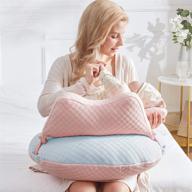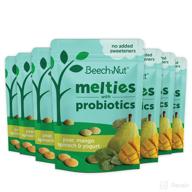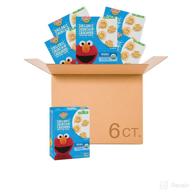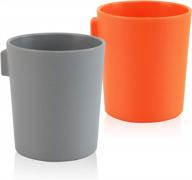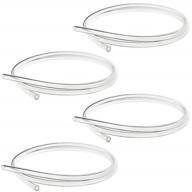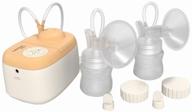The Importance of Proper Head and Neck Support for Infants
Providing proper head and neck support is crucial for an infant's development and safety. An infant's head accounts for about 25% of their entire body weight, compared to around 6% for adults. Babies have weak neck muscles and cannot support the weight of their heads on their own initially. Without proper support, they are at risk of plagiocephaly (flat head syndrome) and developing torticollis (twisted neck). Fortunately, there are several ways parents can ensure their baby's head and neck are properly supported.
Using the Right Baby Pillows
Specialty infant pillows are designed to cushion and cradle a baby's head while keeping the neck and spine in alignment. Key features to look for include:
- Firm, flat surface to prevent neck flexion
- Low profile for stability
- Contoured sides to prevent the head from rolling
- Breathable materials like cotton or mesh
Avoid using regular adult pillows, as they are too soft and elevated for an infant's neck. Waterbed pillows or memory foam are also not recommended due to the uneven surfaces. Always keep pillows away from sleeping infants under 1 year old to prevent suffocation hazards.
Using Careful Positioning
Along with proper pillows, the position of the baby's head and neck need to be maintained as well. When placing a sleeping baby on their back, their head should be centered and supported with the neck straight. Swaddling can help keep an infant in this safe neutral position.
When holding a baby, be sure to support the head and neck at all times. Cradle the head in the crook of your elbow and make sure it does not tilt back or forward. Avoid vigorously bouncing or jostling movements.
When bottle feeding, hold the baby semi-upright and align their ears, shoulders, and hips. Tilting the bottle too far back or letting the baby's head hang unsupported can cause issues.
Tummy Time and Exercises
Supervised tummy time while awake is recommended to strengthen neck muscles. Start with just a few minutes at a time. Place interesting toys in front of the baby to motivate them to lift their head up.
Gently stretch and massage the baby's neck to promote range of motion. Carefully bend the head forward, back, and side to side. Never force the neck past its natural limits.
As babies grow older and can sit unsupported, there are additional exercises that can build strength. Have the baby look up at toys, look side to side, and tilt their head to each shoulder.
Consult Your Pediatrician
If you have any concerns about the development of your baby's neck and spine, consult your pediatrician. They can assess the baby for signs of torticollis or plagiocephaly and provide appropriate treatment options like physical therapy or a cranial orthosis helmet.
With proper pillow support, positioning, exercises, and medical guidance when needed, you can ensure your infant develops strong neck and spine muscles for healthy growth.
Choosing the Right Baby Pillow Material
When selecting a pillow for your infant, the filling material is one of the most important factors. The right materials will keep your baby comfortable and properly supported while sleeping. Here are some pros and cons of common baby pillow fillings to help you decide.
Polyester Fiber Fill
- Soft, fluffy feel
- Molds to head shape
- Retains loft and shape
- Hypoallergenic and dust mite resistant
- Affordable cost
- Can get lumpy over time
Polyester is a top choice for many baby pillows. It provides softness while supporting the head at an even height. Polyester fiber resists deterioration and allergens. Just be sure to fluff occasionally.
organic Cotton
- Breathable and moisture-wicking
- Hypoallergenic and chemical-free
- Eco-friendly and sustainable
- Naturally flame retardant
- Softens over time
- Lower loft than polyester
- Needs occasional fluffing
For parents who prefer natural materials, organic cotton is an excellent choice. It allows airflow to keep your baby comfortable and prevent overheating. Organic farming methods also avoid pesticide exposure.
Top products in 🛌 Baby Pillows & Pillow Covers
Memory Foam
- Cradles and molds to head
- Relieves pressure points
- Hypoallergenic
- Holds shape and support
- Can feel warm for some babies
- Higher cost
Memory foam conforms perfectly to every contour of your baby's head for customized support. It evenly distributes weight and recovers its shape slowly when pressure is removed. Some babies may get warm since it does not allow much airflow.
Another interesting products
Latex
- Naturally moldable
- Hypoallergenic and antimicrobial
- Moisture-wicking
- Durable and resilient
- Higher cost
- Can have natural rubber smell
Latex foam comes from the sap of rubber trees. It cradles the head without sagging and has natural resistance to allergens and microbes. Make sure to choose high-quality natural latex vs cheaper synthetic versions.
Similar products
Other Options
Other less common materials like buckwheat, wool, and microbead fill can also be found in some baby pillows. Always check for certifications like OEKO-TEX to ensure any materials are non-toxic and safe for infants.
Consult your pediatrician if your baby has any special health considerations that may affect what pillow materials would be best. With the wide range of options available today, you're sure to find the perfect blend of comfort and support.
Keeping Baby Pillows Hygienic
Maintaining proper hygiene with your baby's pillow is essential for their health and safety. Babies are more susceptible to illness, so taking steps to minimize germs and allergens is key.
Wash Frequently
Ideally, baby pillows should be washed at least 1-2 times per week. More frequent washing is recommended if the baby has been sick. Check the care instructions, but most baby pillows can be machine washed and dried.
- Use hot water (140F+) to kill germs and bacteria
- Add a small amount of mild detergent
- Use the gentle cycle to preserve the pillow material
- Air dry or tumble dry on low heat
For pillows that cannot be washed, spot clean with warm water and a mild soap. Avoid harsh chemicals.
Cover with Pillowcase
Always use a pillowcase, even if the pillow has a removable cover. The pillowcase prevents skin oils, drool, and head sweat from soaking into the pillow. Pillowcases should be washed at least 2-3 times per week.
- Change pillowcase after each night's use
- Choose breathable cotton or jersey material
- Machine wash and dry on hot/high settings
- Replace stained/torn pillowcases
Clean Other Bedding
Pathogens from spit up, sweat, and diaper leaks can transfer from crib sheets and blankets to the pillow. Follow safe sleep guidelines and avoid loose bedding, but regularly wash whatever is used.
Sanitize Surfaces
Clean any surfaces the pillow contacts, like the crib mattress, with disinfecting wipes at least once a week. This prevents germs from contaminating the freshly washed pillow.
Let Air Out
If possible, put pillows outside to air out in the sunlight regularly. The UV rays naturally sanitize while the fresh air circulates inside the pillow.
Replace Often
Discard and replace baby pillows every 6-12 months at minimum. Older pillows accumulate unseen buildup of germs, allergens, and microbes. Buy new ones to ensure safety.
With diligent hygiene habits, you can rest assured your baby's pillow is clean and hygienic. As always, consult your pediatrician if you have any concerns about allergies or illnesses related to your baby's pillow or bedding.
Fun and Stylish Pillowcase Options for Your Baby
Your baby's pillowcase should not only be soft and comfortable, but also reflect their cute style. With so many fun designer options available today, you can easily dress up your little one's pillow.
Cute Prints
From animals to balloons, choose pillowcases with prints that coordinate with your nursery theme or your baby's interests. Playful designs create an environment that stimulates your baby visually.
- Nature themes like jungle animals or flowers
- Nursery rhyme characters like teddy bears
- Trendy patterns like polka dots or chevron
- Solid colors in soft pastels or bold hues
Specialty Fabrics
Look for pillowcases made of ultra-soft, high quality fabrics for comfort. Options like jersey knit and flannel will feel soothing against your baby's cheeks.
Personalized Touches
Make it extra special by customizing with your child's name or initials. Embroidered designs or vinyl monograms add a personalized element.
Comfy and Functional
Don't forget function as well as fashion. Seek out details like envelope closures for easy washing and organic fabrics to prevent irritation.
Change with the Seasons
Experiment with different pillowcase styles as your baby grows. You can reflect the seasons with crisp cotton in summer and cozy flannel when it turns cold.
Mix and Match
Get a selection of 2-3 prints or designs to mix it up from day to day. Rotating pillowcases keeps the look fresh.
Coordinate
Tie your whole nursery together by matching pillowcases to crib sheets, blankets, and other decor. Repeating colors, patterns, and themes creates a chic cohesive style.
With the wide range of cute, comfy, and trendy baby pillowcases on the market, you can show off your little one's unique personality while keeping them comfortable. Change up the look as they grow for an ever-evolving nest.
Transitioning from Infant Head Support to Toddler Pillows
As your baby grows from an infant into a toddler, their needs for head and neck support change. The right sleep setup can help keep your active child comfortable and safe.
When to Transition
Experts recommend introducing a toddler pillow between 18-24 months. Look for these signs your little one is ready:
- Able to get in and out of bed without help
- No longer sleeping in a crib
- Stopping use of infant accessories like nests or wedges
- Seems uncomfortable without head support
Choosing a Toddler Pillow
The best toddler pillows are firm and flat to support the head/neck without flexing. Key features include:
- Small, compact size - around 16 x 12 inches
- Low loft no more than 3 inches thick
- Hypoallergenic filling like memory foam or polyester
- Breathable, durable pillowcase
Softer pillows can conform too much and bend the neck. Avoid pillows filled with down alternative or feathers as well.
Pillow Positioning
Proper pillow placement helps keep the spine aligned. Position it under the shoulders near the neck - not the head. The pillow should not elevate the head more than a couple of inches.
Safe Sleep Habits
Always place toddlers to sleep on their backs to prevent suffocation. Do not use pillows for infants under 1 year old.
Remove any loose bedding like blankets or stuffed animals to prevent overheating and potential hazards.
Transition Slowly
Try using the toddler pillow for daytime naps first before introducing for nighttime sleep. Watch your child’s comfort level.
If they seem frustrated or struggle sleeping with it, delay use and try again in a few weeks when they develop further. Every child has a unique timeline.
Be Patient
Adjusting to a new pillow may take time. Try various sizes, materials, and positioning until your toddler adapts. Offer lots of reassurance about their “big kid” pillow.
With the right pillow and transition process, you can help make your toddler’s sleep safe, cozy and aligned.
Creating a Cozy and Safe Sleep Environment for Your Little One
Ensuring your baby has a sleeping space that is both snuggly and secure is key to their health and your peace of mind. The right setup promotes safety while helping your child feel relaxed and comfortable.
Use a Firm, Flat Surface
Always put babies to sleep on their backs on a firm, flat mattress with a tight-fitting sheet. Softer surfaces like sleep positioners, pillows, and plush bedding increase the risk of suffocation.
Control Temperature
Babies should sleep in a climate-controlled room between 65-70°F. Monitor temperature and add or remove layers like sleep sacks if needed. Avoid over-bundling which can lead to overheating.
Add Softness
Look for baby-safe products that add warmth and coziness without loose fabric. Options include:
- Wearable blankets or sleep sacks
- Crib sheets made of flannel or jersey
- Hypoallergenic crib mattresses
- Breathable cotton pillows (12m+)
Reduce Noise and Light
Limit external stimuli that can disrupt sleep. Use blackout curtains, white noise, and mute monitors/devices. Keep the nursery dark and quiet.
Maintain Safety Standards
Follow all AAP guidelines for crib safety. Ensure the crib is structurally sound with proper fitting mattresses, sheets, and no loose items.
Keep Room Simple
Avoid clutter and unnecessary nursery decor. Streamline the space to minimize risks and allergens. Focus on simplicity and functionality.
Establish Bedtime Routine
Perform activities like swaddling, rocking, singing, reading in the same sequence nightly. Consistent routines signal to your baby it's time to sleep.
Creating the ideal nursery environment helps promote your baby's healthy development while letting parents find reassurance and rest themselves. Prioritize both safety and coziness as your child grows.
Comfortable And Safe Baby Pillows For A Good Night's Sleep
When it comes to selecting a baby pillow, it is important to prioritize safety and comfort. Here are some tips and recommendations to help you choose the best baby pillow for your little one:
Remember to always prioritize safety when selecting a baby pillow, and consult with your pediatrician if you have any concerns.
What Are The Benefits Of Using A Baby Pillow?
Using a baby pillow can provide several benefits for your little one. Here are some of the benefits of using a baby pillow:
It is important to note that babies need specially designed pillows until about two years old. Using adult pillows can increase the risk of sudden infant death syndrome and allergies. Always prioritize safety when selecting a baby pillow, and consult with your pediatrician if you have any concerns.
What Types Of Baby Pillows Are Available In The Market?
There are several types of baby pillows available in the market. Here are some of the most common types:
- Neck and head support pillows: These pillows are designed to provide extra support and cushioning for your baby's head and neck, ensuring they sleep more soundly through the night.
- Memory foam pillows: These pillows are made of soft, slow-rebound memory foam that conforms to your baby's head and neck, providing comfort and support.
- Flat head pillows: These pillows are designed to prevent or correct flat head syndrome, a condition that occurs when a baby's head develops a flat spot due to prolonged pressure on one area.
- Nursing pillows: These pillows are designed to help nursing mothers get into a comfortable position to nurse, providing support for their arms while feeding the baby.
- Anti-roll pillows: These pillows are designed to keep your baby in a safe position while sleeping on their side.
- Toddler pillows: These pillows are designed for toddlers and provide the right amount of support and comfort for their age group.
When selecting a baby pillow, it is important to prioritize safety and comfort. Always choose a specially designed baby pillow until your baby is about two years old, and avoid using adult pillows, which can increase the risk of sudden infant death syndrome and allergies.









